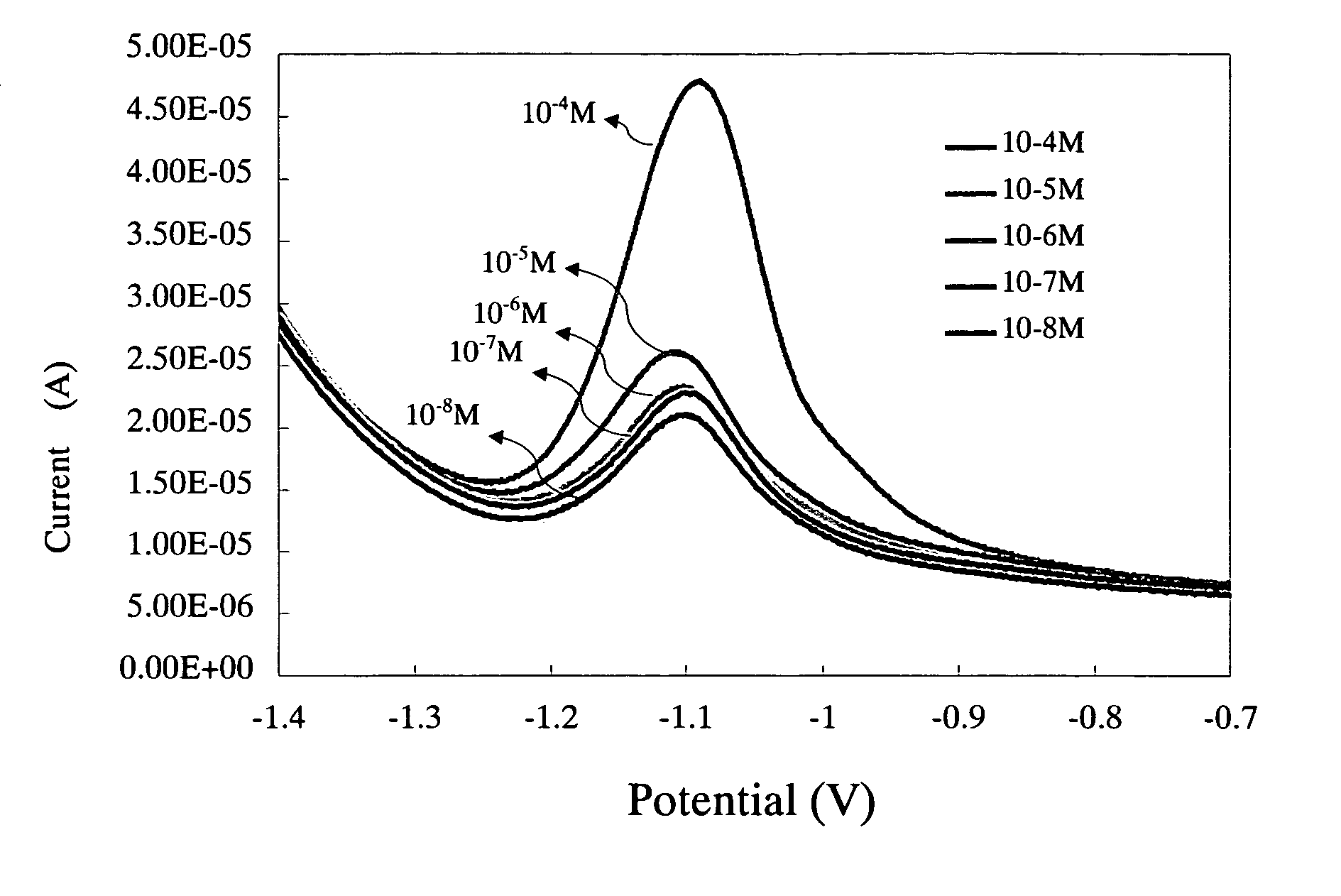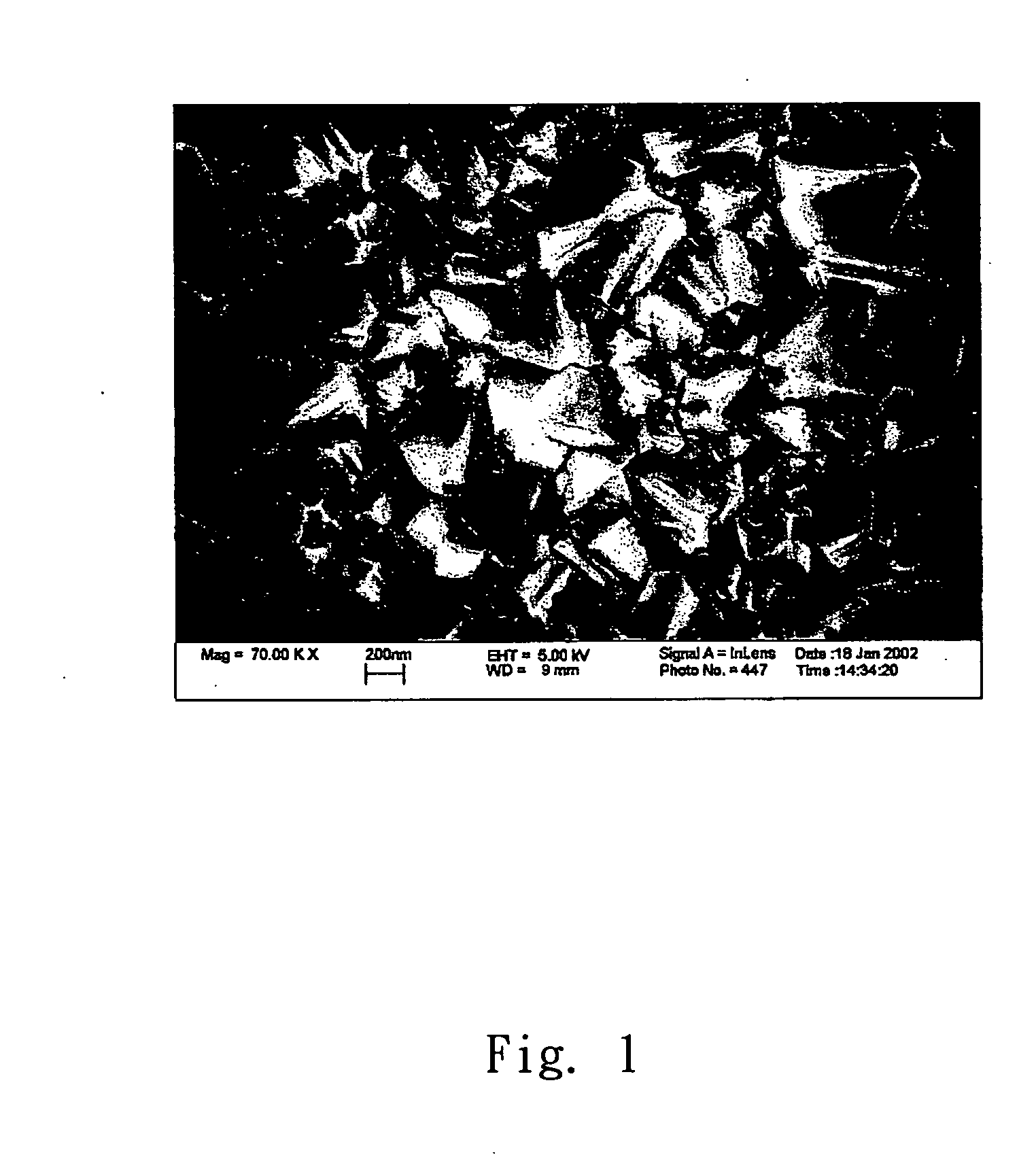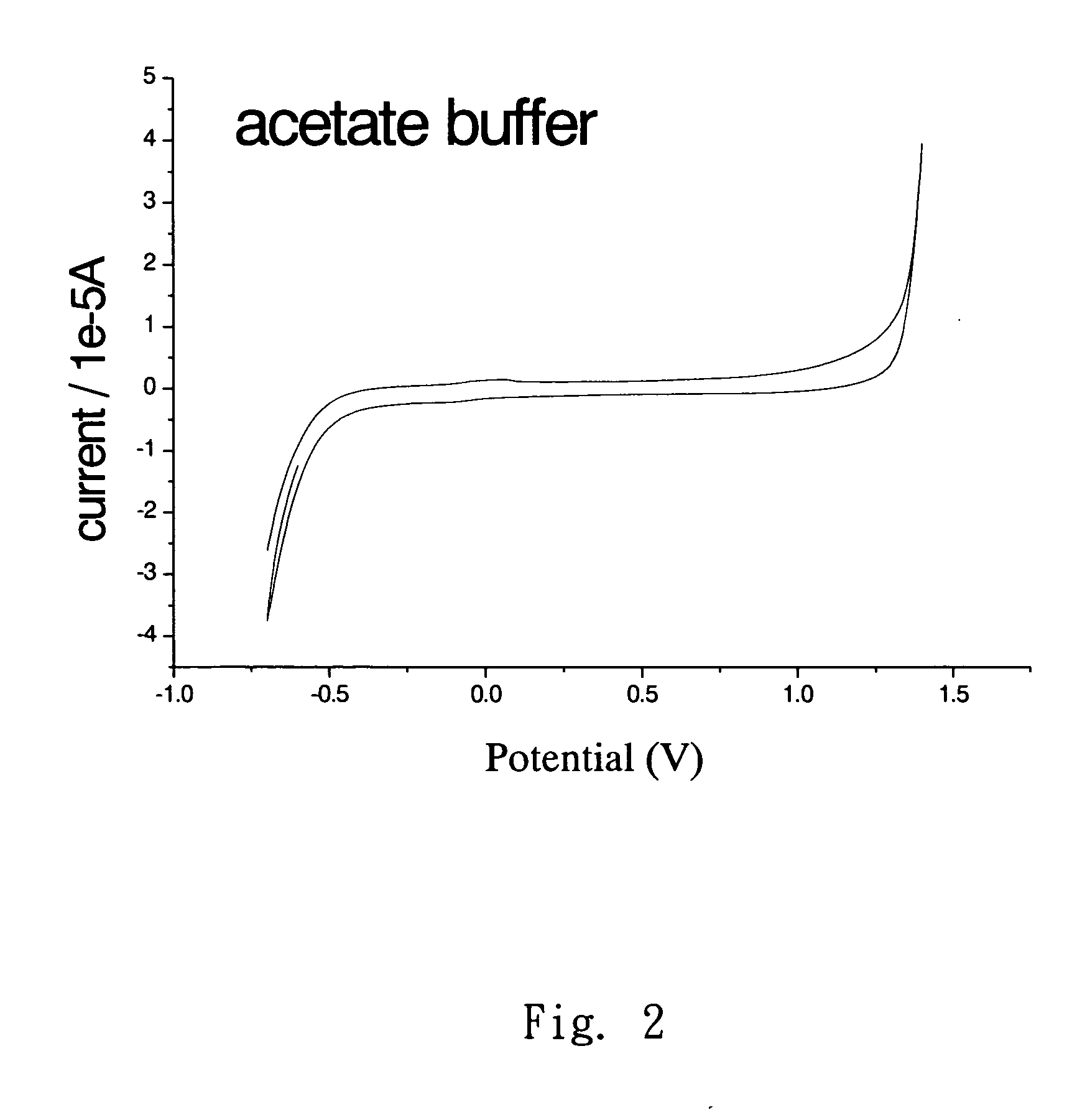Method for detecting trace amount of matters by using pulsed voltammetry
a pulsed voltammetry and trace amount technology, applied in the field of electrochemical analysis methods, can solve the problems of large damage to the human body and the ecological environment, the equipment of the majority of these equipments is expensive and time-consuming, and the conventional electrodes (such as noble metals, graphite carbon, conductive oxides) still have many problems to be solved, so as to reduce the background current, increase the detection sensitivity, and widen the detection range
- Summary
- Abstract
- Description
- Claims
- Application Information
AI Technical Summary
Benefits of technology
Problems solved by technology
Method used
Image
Examples
example 1
Analysis of Pb-Ion Concentration Using Conductive Diamond Film Electrode
[0032]FIG. 2 illustrates the background current for using the cyclic voltammetry (CV) in the blank test of the conductive diamond film electrode, wherein the potential range without current is between −0.5˜1.3V, which is the potential range using CV for CDE detection. FIG. 3 is an electrochemical analysis diagram illustrates using the conductive diamond film electrode associated with the square wave voltammetry (SWV) to detect the Pb-ion solution with the concentration between 10−4M, 10−5M, and 10−6M, wherein the oxidation current for the Pb ions is appeared at the potential about −0.6V. As shown in the figure, during detection using the pulsed voltammetry, the initial potential is −1.0V, which is far negative than the potential limit (−0.5V) in the pulsed voltammetry. The reason is that when using negative potential for reduction of Pb ions for a period of time (referred as accumulation time) and conducting th...
example 2
Analysis of Zn-Ion Concentration Using Conductive Diamond Film Electrode
[0033]FIG. 4, FIG. 5 and FIG. 6 illustrates using conductive diamond film electrodes respectively associated with the cyclic voltammetry (CV), the differential pulsed voltammetry (DPV), and the square wave voltammetry (SWV) to detect the Zn ions in the concentration range between 1.0 mM (65 ppm) and 10 nM (0.65 ppb). After the reduction of Zn ions at negative potential (accumulation time for 180 seconds), it will conduct the anodic stripping toward the positive potential, and scan the anodic stripping current, wherein the concentration limit of detection by the cyclic voltammetry is 2 ppm, for the differential pulsed voltammetry is 6.5 ppm (10−4M), and the highest detection sensitivity provided by the waveform of the square wave voltammetry is 0.00065 ppm (10−8M).
example 3
Analysis of Cu-Ion Concentration Using Conductive Diamond Film Electrode
[0034]FIG. 7 is an electrochemical analysis diagram illustrating using conductive diamond film electrodes associated with the square wave voltammetry (SWV) to detect the Cu-ion solution in the concentration range between 1.0−4M and 10−6M, wherein the Cu-ion oxidation current appears at the potential about −0.1V.
PUM
| Property | Measurement | Unit |
|---|---|---|
| pulsed frequency | aaaaa | aaaaa |
| conductive | aaaaa | aaaaa |
| concentration | aaaaa | aaaaa |
Abstract
Description
Claims
Application Information
 Login to View More
Login to View More - R&D
- Intellectual Property
- Life Sciences
- Materials
- Tech Scout
- Unparalleled Data Quality
- Higher Quality Content
- 60% Fewer Hallucinations
Browse by: Latest US Patents, China's latest patents, Technical Efficacy Thesaurus, Application Domain, Technology Topic, Popular Technical Reports.
© 2025 PatSnap. All rights reserved.Legal|Privacy policy|Modern Slavery Act Transparency Statement|Sitemap|About US| Contact US: help@patsnap.com



